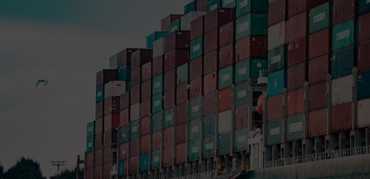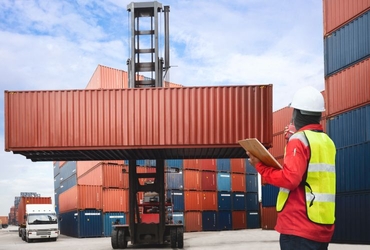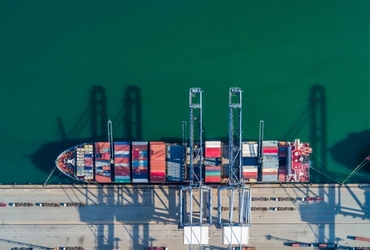
New shipping alliances: What you need to know
In just under two weeks, the ocean freight industry will undergo a transformation in the form of shipping alliances. **Come April 1st, the song of shipping carriers will come to a halt in their roundabout of musical chairs. **THE Alliance, Ocean Alliance, and 2M will set sail with new members. The new formation will look starkly different from the previous alliance groupings. That’s thanks to an unprecedented number of mergers and acquisitions in 2016.
In this post, we’ll look at how the world’s largest shipping lines will reorganize themselves from the current four alliances to three.
New shipping alliances: What to expect?
- 2M Alliance: Maersk and MSC
- Ocean Three Alliance: CMA CGM, UASC, China Shipping
- G6 Alliance: NYK Line, OOCL, APL, MOL, Hapag-Lloyd, HMM
- CKYHE Alliance: K Line, COSCO, Hanjin Shipping, Evergreen, Yang Ming
New shipping alliances (we recommend giving the posts dedicated to each individual grouping a read to understand their members and offerings):
- 2M Alliance: Maersk, MSC
- THE Alliance: NYK, MOL, K Line, Yang Ming, Hapag-Lloyd (with UASC)
- Ocean Alliance: CMA CGM, Evergreen, OOCL, COSCO Shipping
These three alliances represent 77.2% of global container capacity and a whopping 96% of all East-West trades. Ocean Alliance offers the most services, with some 40 loops. THE Alliance follows with 32 services and 2M with 25. Among the changes, THE Alliance and Ocean Alliance will run 11 weekly Asia-northern Europe routes. 2M has also increased its services on this route from five to six. That’s mainly to cater to the additional slots under their agreement with HMM and Maersk’s takeover of Hamburg Süd.
According to a recent Drewry report, Ocean Alliance’s gets its lead from its seven Asia-Middle East and -Red Sea services. In comparison, THE Alliance offers only one such service and 2M none. With regards to the Asia-US West Coast routes, Ocean Alliance has 13 services, THE Alliance 11 and 2M only five.
More recently, Hapag-Lloyd and UASC postponed their final merger date as a result of unexpected delays. The merger will now take place at the end of May as opposed to the end of March, which would have been in time for the new alliances reshuffle. However, this is unexpected to affect the start date of THE Alliance. It will set sail on April 1st, 2017 as planned.
Lack of information
For the Ocean Alliance, information regarding actual schedules and what specific vessels will form part of the service is not yet available. According to its brochure, ‘transit times are provided for information and example purpose and are non-contractual’.
For THE Alliance, sailing information is available but limited to a few services. Port and terminal information still may change. The group has yet to release details of vessels and their operations.
According to Alphaliner’s preliminary data, capacity gaps from Hanjin Shipping’s collapse will be filled. Main carriers of the alliances have added new services across the main Asia-Europe and Asia-North America routes.
Effect on ports
The alliance reshuffle will no doubt have an impact on ports. The port of Singapore is set to benefit the most but at the expense of other Asian ports. Of the 29 Asia-Europe services provided by all three groupings, the port of Singapore will attract 34 weekly calls. That’s up from the current 29 calls from 27 services. This is thanks to CMA CGM’s acquisition of APL, which prompted the French carrier to embark on a joint venture with PSA-Singapore for operating its CMA CGM-PSA Lion Terminal.
This, however, comes at the expense of neighboring Port Kelang, which will have its number of weekly calls reduced from eleven to five, and rival Hong Kong port.
“Hong Kong will be the biggest loser of the rationalization, with only seven weekly calls of northern European loops and three weekly calls of Mediterranean loops, replacing 10 and five calls respectively,”
– Alphaliner
For THE Alliance, Singapore holds the honor of being its only Southeast Asian hub. Malaysia’s Tanjung Pelepas remains as 2M’s key hub in the area.
On the receiving end, Rotterdam Port will continue to serve as the key port on the European side. Rival Hamburg Port will lose one weekly service from the Ocean Alliance.
Expect delays
Shipping consultant Drewry has warned shippers to expect delays upon the launching of the new alliances. It says that immediate disruption appears “inevitable”, largely due to the lack of port-service confirmation. This has the potential to disrupt everyone involved in the supply chain, including shippers, ports, truckers and railroads.
“For shippers, the lack of clarity on which hub ports are going to be used is not too much of an issue, as it’s fairly invisible to them – but the gateway ports are a much more significant hole in their knowledge.”
– Drewry
Call for preventive measures
US Federal Maritime Commissioner William Doyle has called for alliance safeguards to prevent another supply chain disruption like the one that resulted from Hanjin’s collapse. The South Korean liner’s court receivership application in August sent supply chains into a state of chaos. For fear of vessel seizure, the company ordered container-loaded boats not to dock. From the other side, ports denied entry to Hanjin vessels for fear the company would not pay the corresponding fees.
“All the components of the supply chain – carriers, ports, terminals, labor, forwarders, and shippers t0 need to talk with one voice. Although I firmly believe that if you are going to join an alliance it is the responsibility of all its members to make sure cargo gets to where it’s going.”
– FMC Chief William Doyle
Emergency fund set up
Following this, THE Alliance has unveiled an emergency fund that they will tap into in the event of a bankruptcy. The grouping will use money from this fund to provide a smooth operational flow should a member falter. More specifically, it protects customers’ cargo and ensures that it reaches its port of destination with no hiccups.
“After what happened with Hanjin, any safeguards is a good idea. No matter what one might think of alliances, they do seem a means to an end right now for the industry to hopefully stabilize and revert to a healthier and more balanced level for the sake of everyone.”
– Carlos Hernández, Co-Founder, iContainers
Ocean Alliance, on the other hand, has said that it does not require an emergency fund as it claims that all its members are financially strong. Of its members, Evergreen is the only member yet to release their financial results. But the remaining have posted profit losses for 2016.
2016 formed a precedence in the shipping industry in terms of its mergers, acquisitions, and liners’ movements in general. We witnessed the downfall of Hanjin, the mergers of Japanese lines and CMA CGM’s acquisition of APL – to name a few. It’s hard to decide what the biggest shipping story of 2016 was. But all have undoubtedly left a mark on the way the new shipping alliances have shaped their services.
Related Articles


